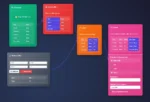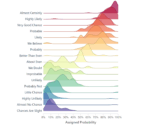In today’s hyperconnected digital landscape, data flows through environments as seamlessly as oxygen moves around us. This ambient data—ubiquitous, real-time, and vital—is fueling innovation, enabling insights, and creatively disrupting industries at an unprecedented pace. However, without proactive and embedded data governance, this same breathable information can rapidly pollute workflows with inaccuracies, compliance pitfalls, and ineffective decisions. Implementing effective quality control throughout your data pipeline is not just a technical best practice; it’s now an operational imperative. As enterprises move toward embracing a robust data-focused ecosystem, embedding data governance practices at every stage becomes the foundation for scalable success. Let’s delve into how ambient data governance reshapes quality assurance, providing decision-makers actionable strategies to enhance their data-driven decision-making capabilities across key business contexts.
Understanding Ambient Data Governance
Ambient data governance refers to the continuous integration of data quality management practices across the entire data lifecycle—from ingestion, storage, and processing, to analytics, visualization, and decision-making. Unlike traditional governance models, which often focused exclusively on centralized activities or periodic audits, ambient governance ensures that quality control becomes inherent and implicit in your data pipeline. It transforms governance from reactive monitoring into an always-on, embedded practice designed to detect and mitigate issues organically before they escalate.
Why is ambient data governance indispensable? Because we now have multiple interconnected platforms using data simultaneously—integration layers built upon web-native technologies, analytics tools tapping into real-time streams, and visualizations dynamically adjusting to disparate data feeds. Traditional “checkpoint” models for data validation simply can’t keep up anymore; batch verification methods are no longer enough when real-time accuracy is expected. Modern data stacks built around technologies such as Node.js streamline these complexities, and partnering with a seasoned consultancy offering expert Node.js consulting services can accelerate the transition towards embedded quality governance practices.
Consider ambient data governance as the oxygen management system for your organization’s data ecosystem—you won’t necessarily see it, yet its absence quickly becomes apparent. It allows organizations to comfortably transition from traditional batch processing to stream-focused real-time analytics—which, as we have noted in our previous article, Batch is Comfortable But Stream is Coming for Your Job, is shaping the future of analytics and user expectations.
Integrating Quality Control into the Data Pipeline
Establishing Continuous Data Validation Mechanisms
Gone are the days when data validation was a periodic afterthought. Ambient data governance demands continuous proactive data validation mechanisms embedded naturally within your pipeline workflows. Real-time data pipelines, foundational to modern analytics and business intelligence, necessitate automated and streamlined validation protocols to detect anomalies at ingest. Tools such as schema validation scripts, automated anomaly detection models powered by machine learning, and well-defined data quality standards, are key.
Increasingly, businesses rely on real-time analytics architecture patterns to rapidly harness and leverage signals from ambient data streams. Effective ambient governance requires built-in layers that immediately validate and cleanse streaming data feeds. By enforcing quality controls constantly rather than periodically, your organization minimizes costly data drift scenarios, strengthens business agility, and enhances the ongoing reliability of the analytics lifecycle.
Automating Data Governance Practices
Automation is critical to ambient data governance. Leveraging intelligent automation tools that apply predefined governance criteria to pipelines reduces human-derived data entry errors and frees valuable technical resources. Automation provides seamless capabilities—such as integrating automated lineage tracking, policy compliance checks, and metadata management tools.
Moreover, when implementing automation, your enterprise is future-proofing your tech stack. Our analysis on The Future of Data Engineering Trends and Predictions highlights how automation technologies massively improve scalability and reduce integration complexity. Implementing automated governance processes across ingestion, transformation, analytics, and reporting stages ensures data reliability without sacrificing agility or adding unnecessary complexity.
The Impact of Ambient Data Governance on Strategic Decision Making
Strengthening Decision Confidence and Accuracy
Quality data is the backbone of strategic decisions. Adopting ambient governance provides unshakeable confidence in your business insights and analytics results by reducing uncertainty and doubt. Hidden data value becomes crystal clear once quality measurements and checkpoints are embedded throughout the pipeline. With ensured accuracy, leaders can more confidently execute rapid decision-making.
Whether it’s optimizing inventory levels, as discussed in our article Maximizing Profitability Through Optimized Inventory Levels, or investing in SaaS solutions—analyzed in our piece The SaaS You Picked Yesterday Will Be More Expensive Tomorrow—integrated ambient data governance enables consistently informed decision-making grounded on trustworthy information.
Minimizing Compliance and Risk Management Challenges
Regulatory compliance, policy adherence, and data privacy constraints pose ongoing challenges. Ambient data governance frameworks significantly reduce these risks by embedding compliance measures directly into your data processes. For instance, solutions that integrate security protocols such as SAML forward proxy authentication into visualization tools and analytics ensure data security policy management is transparent and automated, ultimately improving your data governance posture and reducing enterprise risk.
Best Practices for Implementing Ambient Data Governance
Clearly Define Roles and Responsibilities
Effective ambient governance implementation begins with clearly defined internal roles and stewardship responsibilities. Defining data ownership, quality accountability, and escalation channels ensures transparency and forms the foundational matrix for ambient governance initiatives. Whether you utilize current in-house teams or form strategic partnerships, clarity on data governance ownership facilitates smoother deployment and sustained accountability.
Build Iterative Proofs-of-Concept
Real-time collaboration with experts, as described in our approach to Building Proof of Concepts with Clients in Real-Time, accelerates value realization for ambient data governance implementation. Creating iterative proof-of-concept phases allows your organization to test frameworks, validate governance strategies, and rapidly adjust course. It transforms governance implementation from theoretical plans to practical, measurable instances of success.
Align Visualizations and Reports with User Context
According to principles outlined in our previous blog post on visualization effectiveness—Understanding the Purpose of Your Visualization and the Audience Intended for it—it is essential your governance extends to user-facing applications. By embedding quality control in your visualization layers, you empower stakeholders with accurate insights purpose-built for their decision-making context. This boosts adoption, user trust, and ultimately amplifies business outcomes.
Conclusion: Ambient Data Governance as Your Competitive Advantage
Embedding ambient data governance into your enterprise’s data management strategy positions your business to remain agile, compliant, and strategically robust. Rather than layering governance processes atop existing pipelines, embedding these intrinsic, ambient-quality checkpoints ensures continuous integrity of your data-driven initiatives. Organizations that recognize and master ambient governance practices enhance their competitive edge, enabling rapid adaptability to new markets, better regulatory agility, and more confident long-term decision-making.
As you refine your data governance strategies—consider leveraging expert perspectives and specialized solutions, particularly in architecture modernization. Through strategic partnerships and agile technology stack enhancements, your organization can capture new opportunities, rapidly respond to evolving business environments, and stay consistently ahead of the analytical curve.
Now, your ambient data governance journey awaits—transforming your data from mere reactive checkpoints to proactive and competitive business capabilities.



















